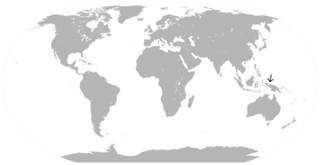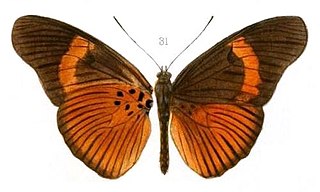
The green-cheeked parakeet, known as the green-cheeked conure in aviculture, is a species of bird in subfamily Arinae of the family Psittacidae, the African and New World parrots. It is found in Argentina, Bolivia, Brazil, and Paraguay.

Pachycephala is a genus of birds native to Oceania and Southeast Asia. They are commonly known as typical whistlers. Older guidebooks may refer to them as thickheads, a literal translation of the generic name, which is derived from the Ancient Greek terms pachys "thick" + kephale "head". This lineage originated in Australo-Papua and later colonized the Indonesian and Philippine archipelagos to the west and the Pacific archipelagos to the east.

The Drakensberg prinia or saffron-breasted prinia is a small passerine bird. It lives in eastern South Africa and Eswatini.

The yellow-bellied sunbird-asity is a small species of passerine bird from the asity family. The male has black upper parts with a bluish sheen and yellow underparts, and is sometimes known simply as the yellow-bellied asity. It is found only in montane rainforests of Madagascar where it feeds on nectar that it sips from flowers, defending a good nectar source from other nectar-feeding birds. It is listed by the International Union for Conservation of Nature as "vulnerable" due to the diminution and fragmentation of its forest habitat.

The Biak gerygone is a species of bird in the family Acanthizidae. It is endemic to the islands of Biak and Supiori in West Papua, Indonesia.

The yellow-browed antbird is a species of bird in the antbird family Thamnophilidae. It is found in Brazil, Colombia, Ecuador, and Peru. Its natural habitat is subtropical or tropical moist lowland forests.

The Bornean whistler or Bornean mountain whistler, is a species of bird in the family Pachycephalidae. It is endemic to the island of Borneo.

The tawny-bellied seedeater is a bird species in the family Thraupidae. It is found in Argentina, Bolivia, Brazil, Paraguay, and Uruguay. Its natural habitats are dry savanna and subtropical or tropical seasonally wet or flooded lowland grassland.
Quercus hypoxantha is a species of oak. It has been found only in northeastern Mexico, in the States of Tamaulipas, Coahuila, and Nuevo León.

Belenois gidica, the African veined white or pointed caper, is a butterfly in the family Pieridae. It is found in the Afrotropical realm.

Pingasa is a genus of moths in the family Geometridae first described by Frederic Moore in 1887.
Alophosoma hypoxantha is a moth of the family Noctuidae first described by Oswald Bertram Lower in 1902. It is found in Australia.

The Depressariinae – sometimes spelled "Depressiinae" in error – are a subfamily of moths in the superfamily Gelechioidea. Like their relatives therein, their exact relationships are not yet very well resolved. It has been considered part of family Elachistidae sensu lato or included in an expanded Oecophoridae. In modern classifications they are treated as the distinct gelechioid family Depressariidae.
Coleophora hypoxantha is a moth of the family Coleophoridae. It is found in southern Russia.

Batesia is a monotypic butterfly genus of the family Nymphalidae. It contains only Batesia hypochlora, the painted beauty.

Pseudacraea kuenowii, or Kuenow's false acraea, is a butterfly in the family Nymphalidae. It is found in Nigeria, Cameroon, Gabon, the Republic of the Congo, Angola, the Democratic Republic of the Congo, Kenya, Uganda and Zambia.
Pingasa hypoxantha is a moth of the family Geometridae first described by Louis Beethoven Prout in 1916. It is found in the Democratic Republic of the Congo and Kenya.

Philiris hypoxantha is a species of butterfly in the Lycaenidae family. It is found in West Irian.
Scoparia hypoxantha is a moth in the family Crambidae. It was first described by Oswald Bertram Lower in 1896. It is found in Australia, where it has been recorded from South Australia and Victoria.
Gonioma hypoxantha is a moth in the family Xyloryctidae. It was described by Oswald Bertram Lower in 1894. It is found in Australia, where it has been recorded from Queensland.















